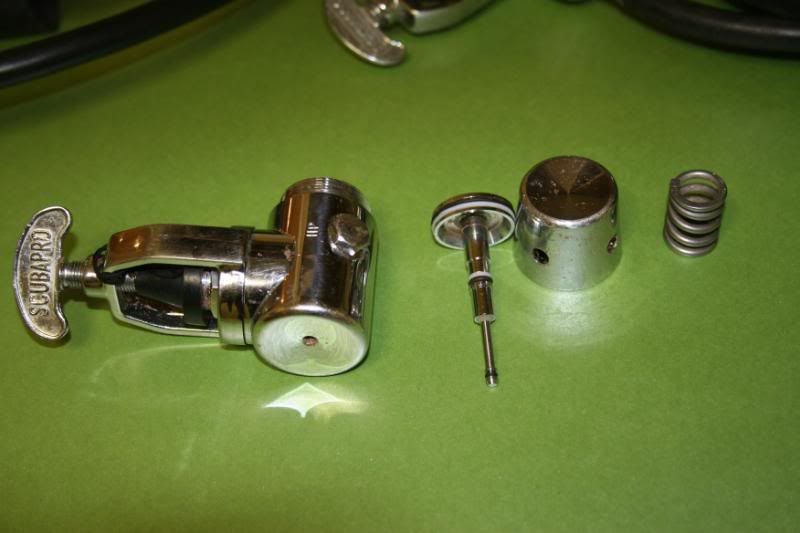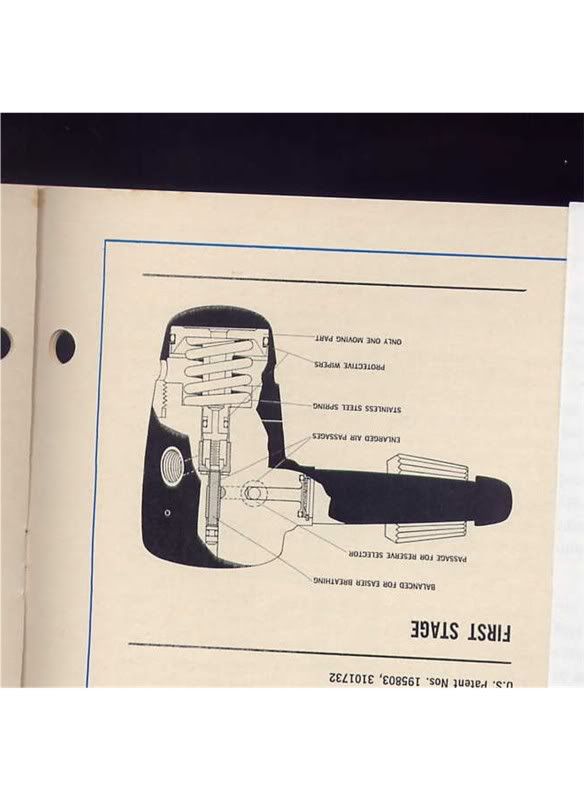It is just another type of balanced piston pressure reduction valve. This regulator was around, probably for less than a year in the early 60’s (probably around 1964 maybe a bit earlier).
When I think of the coaxial valve I think of the Air 1 and the D series second stages demand valve. Is that what you are referring about?
Those came out after the Pilot, in the very late 70’s (around 1979). I don’t think of that mechanism as a pneumatic piston, it is just a balanced valve.
There are many ways of accomplishing similar functions. There are many ways of making a balanced valve. It just happen than in the Scuba industry they all copy each other (especially now a day). It may be in part due to the liability from doing something different or just not wanting to take the risk of not being accepted by the customers (because it is different), but since the 70’s most regulators just look like each other.
It the hydraulic industries and other pneumatic industries there are many different types of control valves used to control fluid flow, and many different designs to accomplish the same functions. The Scuba industry uses just a few simple examples.
Last night I did a regulator clinic for our Scuba club here in Maine. In less than three hours I was able to cover the mechanisms and workings of most of the regulator types build now a day. With a few exceptions (like the newer Poseidon regulators) most second stages in production today can be placed into two types of demand valves and the first stages into three types of pressure reducing valves. And within their type they are all just copies of each other.
IMHO back in the 70’s (some started in the 60’s) there was a bit of an explosion in innovative designs in the Scuba industry (not just regulators, but in all the equipment). Some designs have become popular and the rest just disappeared. It just seem that companies like Scubapro, Dacor, Farallon, and even to a lesser degree US Divers, etc. were willing to take a chance in new designs. Many failed in the market, some deserving the failure some maybe just poor marketing. But, since then Scuba equipment design just seems kind of boring. IMO, it just seems that the largest risk Scuba companies are willing to take is in the use of wild colors and cosmetic styles.







